A classic Chinese noodle dish famous for its nutty & pungent taste. With my detailed recipe, Dan Dan noodles can be easily replicated in your home kitchen.
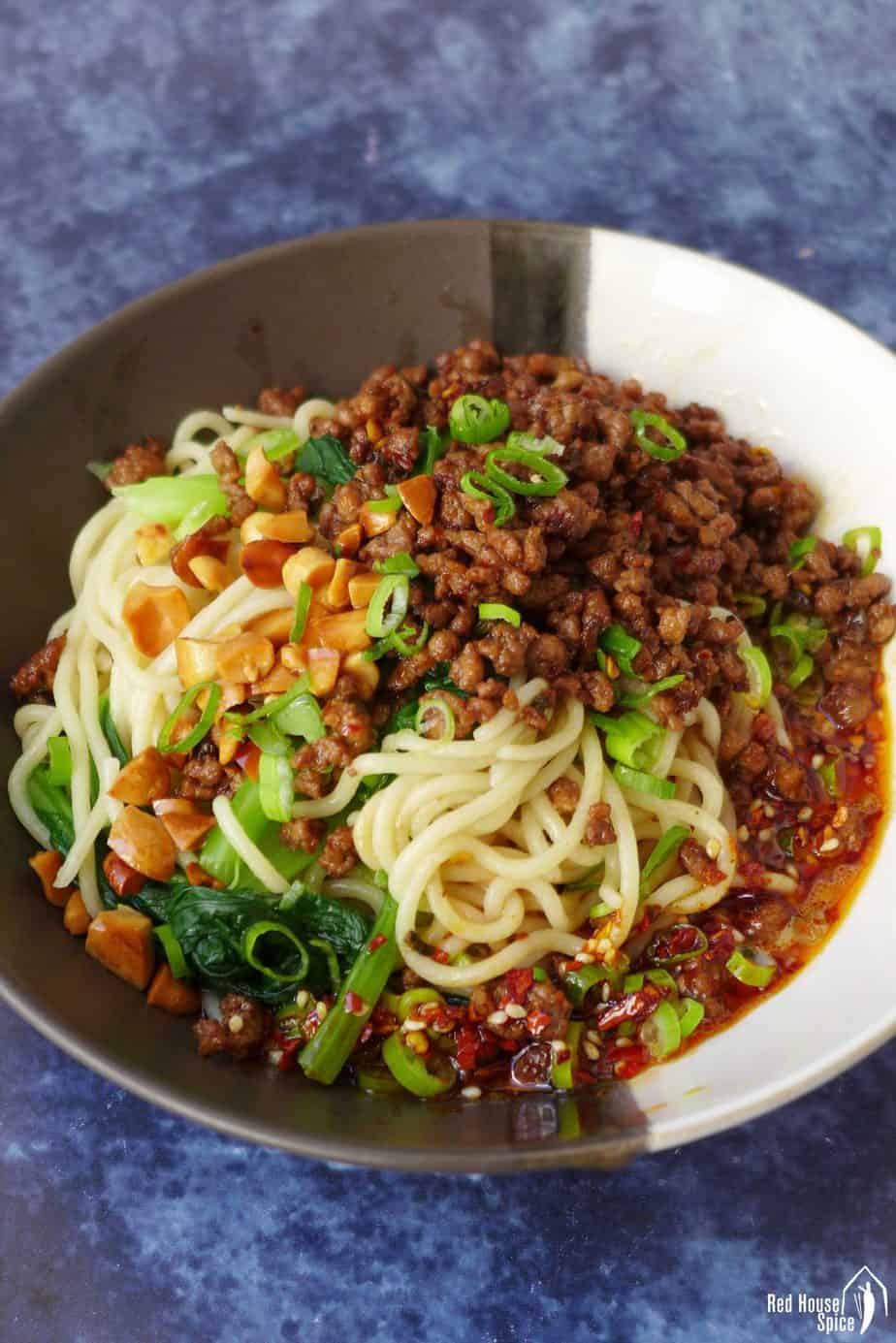
Jump to:
When it comes to cooking, I can never hide my love for spicy food and noodle dishes. Today’s recipe, like many others on my blog, is a great combination of my two obsessions. If you could only try one dish while exploring street food of Sichuan cuisine, I would highly recommend Dan Dan Noodles.
What are Dan Dan noodles
Dan Dan noodles (担担面, aka spicy Sichuan noodles) is named after the traditional carrying pole “Dan Dan” that street vendors use. They place the ingredients, bowls, chopsticks & cookwares in two baskets tied to each end of the pole. Walking around with the pole over their shoulders, they cook and serve the noodles in the street whenever stopped by customers.
It’s no longer a scene in Sichuan that street vendors carrying the pole to sell Dan Dan noodles. From its humble background, it is now a classic Chinese noodle dish adored by many, including foodies outside China.
This scrumptious Sichuan speciality contains:
- A thick sauce made of Chinese sesame paste, chilli oil, ground Sichuan pepper, soy sauce, black rice vinegar, etc. It delivers a distinctive nutty, hot & numbing taste.
- Delicious toppings consisting of fried minced meat, preserved vegetables & fried peanuts/soybeans.
- Plain wheat flour noodles, sometimes accompanied by some leafy green vegetables.
Don’t let the length of the ingredient list scare you. They are what make this dish a wonder. It might take you some time to find all of them, but for a great finished taste, all these ingredients contribute.
Workflow
In terms of cooking, it’s quite straightforward. Follow three simple steps:
- Fry the toppings: Firstly fry peanuts or soybeans in oil. Then fry minced meat and preserved vegetable in the remaining oil.
- Mix the sauce: Thin Chinese sesame paste with water, then add chilli oil, ground Sichuan pepper & other seasonings.
- Cook the noodles: Cook noodles in boiling water. Blanch some leafy green vegetable at the end.
Voilà! Now you just need to put everything in serving bowls and give the noodles a good stir!
Make the toppings
The typical toppings for Dan Dan noodles include fried minced meat, some preserved vegetable and fried peanuts (you may use soybeans too). Here are some tips and substitute ideas for making delicious toppings.
How to fry the minced meat
Pork or beef mince are the two popular choices. However, you may use minced chicken too. Fry the meat in a little oil and season it with soy sauce, rice wine, preserved vegetable and chilli flakes.
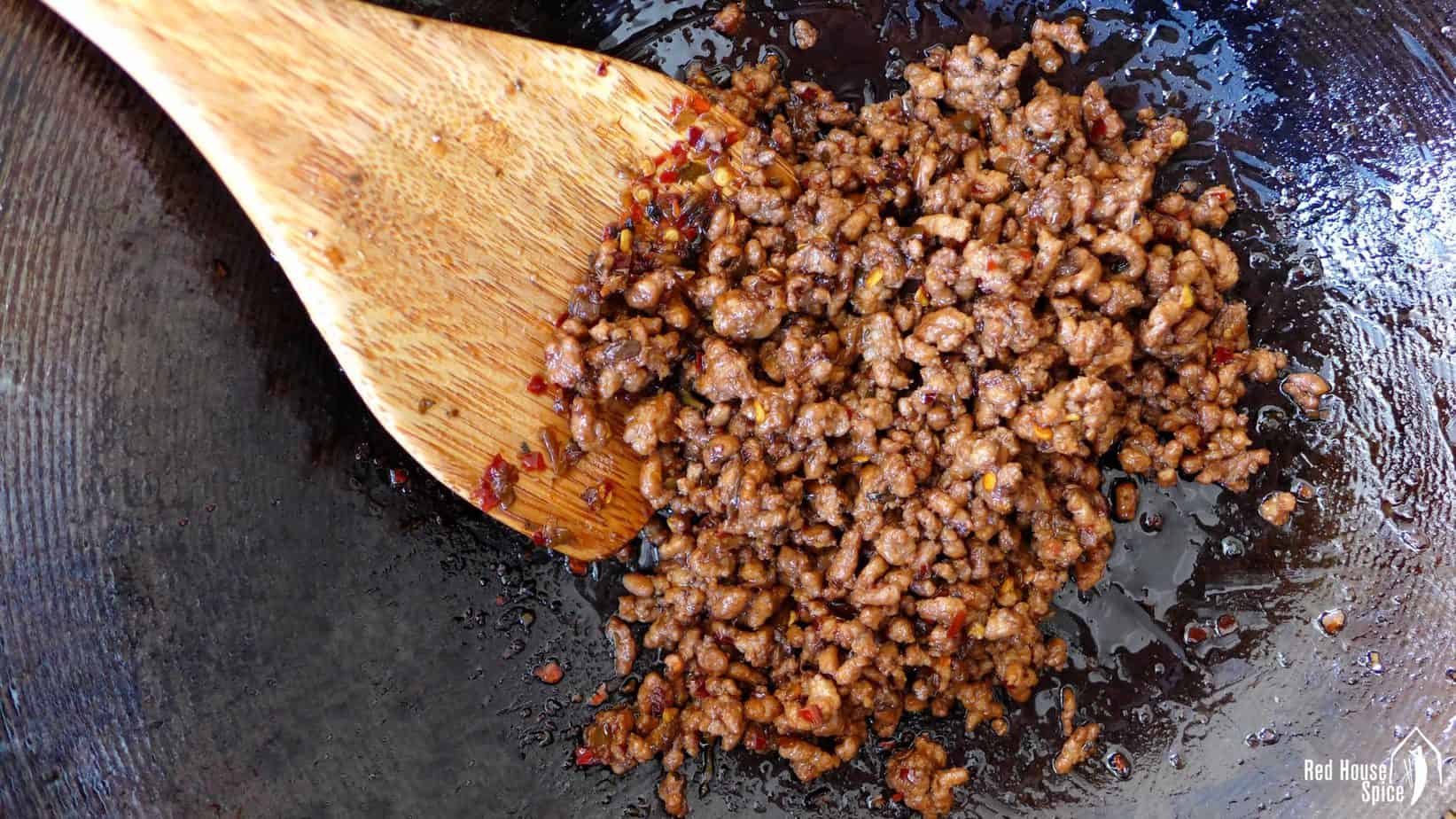
When frying minced meat (particularly the machine ground one), you might find it clots easily. To solve this problem, I always mix raw meat with soy sauce and rice wine prior to frying. The liquid seasoning helps to loosen the mince.
Vegetarian alternatives
To make Dan Dan noodles vegetarian/vegan-friendly, you may replace the minced meat with mushrooms. Dried/fresh shiitake mushrooms or king oyster mushrooms does the job. Chop small and fry them the usual way.
Choices of preserved vegetables
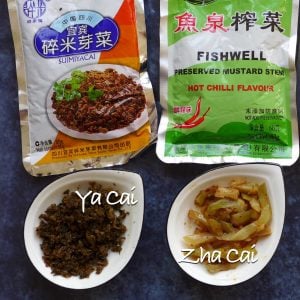
Providing an aromatic, rich saltiness to dishes, preserved vegetables are commonly used in Chinese cuisine. Traditional recipes for Dan Dan noodles call for Yá cài/芽菜 which is preserved mustard greens. I use minced Yá cài (Suì Mǐ Yá cài/碎米芽菜) which is chopped into tiny pieces and very handy to use. You may find it in small plastic packages available in most Chinese stores.
Zhà cài/ 榨菜, aka preserved mustard stem, is a good alternative and more accessible. Usually, it comes in strips or slices. Remember to finely chop them prior to cooking.
Make the nutty topping crispy
The nutty topping gives Dan Dan noodles another layer of texture and flavour. I use peanuts for this recipe but soybeans work too.
To make the peanuts crispy & nicely browned, you need to start frying them with oil in a cold wok over low heat. Otherwise, they can be quickly burnt.
If using soybeans, you need to soak them in water overnight then pat dry with kitchen paper/a clean tea towel. Same as mentioned above, start frying with cold oil in a cold wok.
Prepare the sauce
Making a tangy, exciting, additive sauce is the most important part of cooking Dan Dan noodles. Chinese sesame paste is a must (You find it in Classic Sesame Noodles). Its powerful fragrance, along with the Mala flavour (hot and numbing) created by chilli oil and Sichuan peppercorn, is the soul of Dan Dan noodles.
Chinese sesame paste & its substitutes
Made of toasted sesame seeds, Chinese sesame paste is a dark brown, semi-solid paste resembling the thick version of peanut butter. Not only does it give Dan Dan noodles a distinctive nutty aroma, it also contributes by thickening the sauce which coats the noodles very well.
I’ve seen some online resources suggesting that Chinese sesame paste/芝麻酱 can be replaced by tahini. This is misleading. Chinese sesame paste is made of toasted, whole sesame seeds, whereas tahini uses raw, hulled sesame seeds (sometimes lightly toasted). They have very different tastes and thus, are not interchangeable.
If you have a hard time finding Chinese sesame paste, read my post “Chinese sesame paste & 3 substitute ideas” and try one of the options.
Unlike peanut butter, Chinese sesame paste has a very thick consistency. You need to thin it with some water to achieve a smooth, semi running texture.
Make your own Chinese chilli oil
The hotness of Dan Dan noodles comes from chilli oil which is also called Red Oil/红油 in Sichuan cuisine. You would find many types of Chinese chilli oil in Asian stores and they vary a lot in terms of flavour.
I highly recommend you make your own chilli oil for Dan Dan noodles. It’s super aromatic but doesn’t interfere with other flavours of the dish like some shop-bought ones would do. Also, there isn’t any flavouring agents/preservatives involved and it’s very useful for many Sichuan dishes.
Use freshly ground Sichuan pepper
Regarding Málà (hot & numbing) dishes, one suggestion I always emphasize is grinding your own Sichuan pepper whenever possible. Its freshness and intense flavour would make your Dan Dan noodles stand out.
I’ve received many enquiries on this unique spice, particularly on how to avoid grittiness when grinding. Please refer to my post “Homemade Sichuan pepper powder” to learn how to grind Sichuan peppercorns correctly.
Noodle choices
Wheat flour-based noodles with round, thin shape are the most popular type used in Dan Dan noodles.
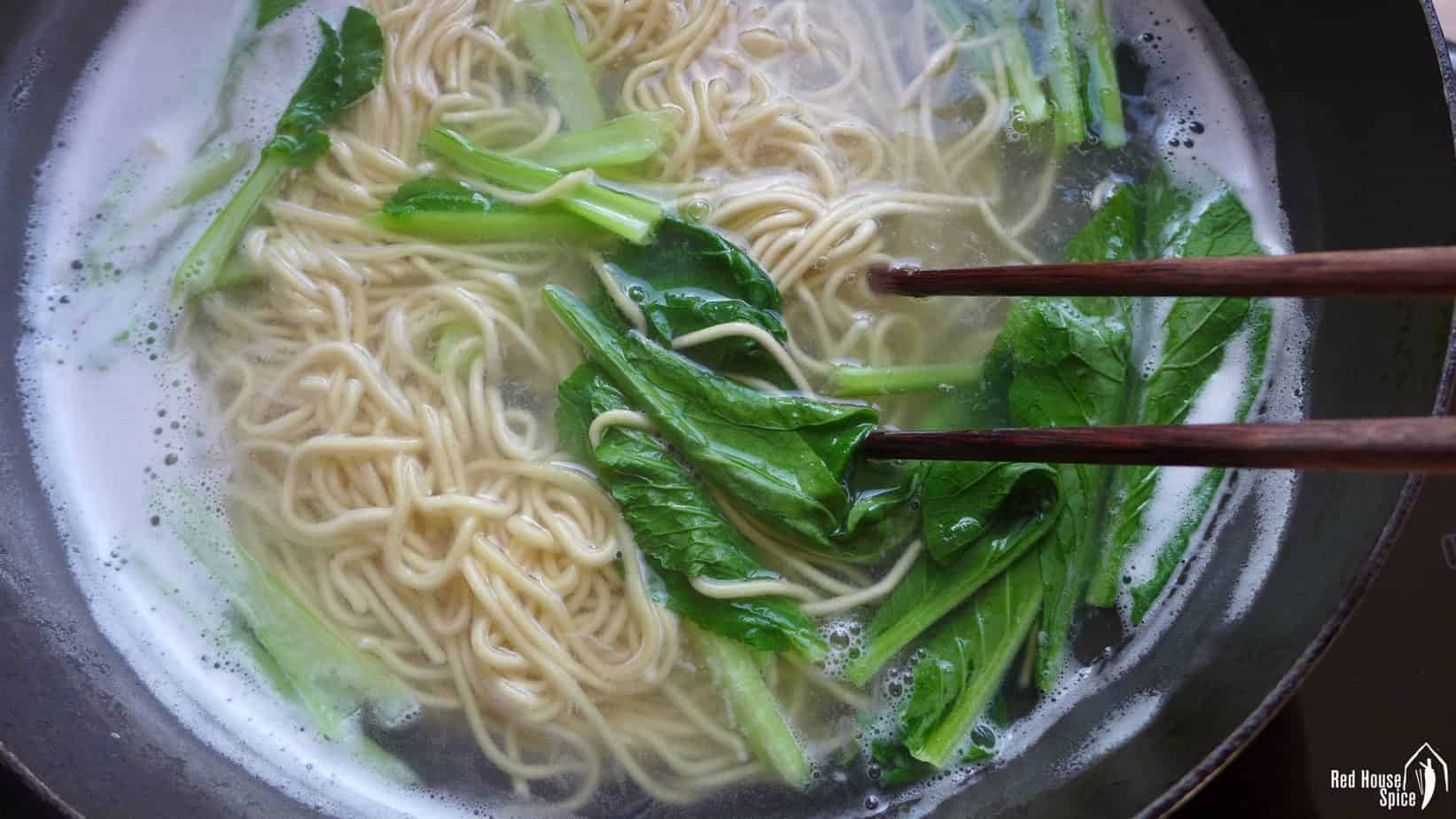
- Use shop-bought dried noodles, preferably the thin type, about 100g for a serving.
- Homemade alkaline noodles (ramen noodles) would work too.
- If you don’t have a noodle maker but still want fresh noodles, try either hand-rolled noodles or hand-pulled noodles.
- If you are looking for a gluten-free option, then use round rice noodles or glass noodles (see example in hot and sour noodle soup).
Make ahead
You can make the sauce in advance or in bulk. It can be stored in the fridge for up to a week. Just remember to leave out the minced garlic. Add it prior to serving.
I also like making a big batch of the toppings (fried meat & peanuts). Store them in air-tight containers in the fridge and consume with 4 days.
Other noodle dishes
Looking for more classic noodle recipes to try? Check out these popular ones:
📋 Recipe card
Love this recipe? Please leave a 5-star 🌟🌟🌟🌟🌟 rating in the recipe card below & if you REALLY like it, consider leaving a comment as well!
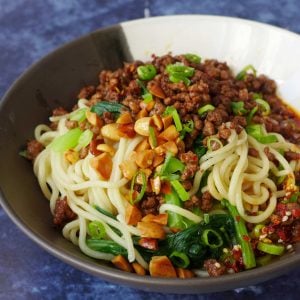
Dan Dan Noodles(担担面)
Ingredients
For the toppings
- 4 oz ground pork - or beef
- 2 teaspoon light soy sauce
- 2 teaspoon Shaoxing rice wine
- 2 tablespoon neutral cooking oil
- 2 tablespoon peanuts - skinless, coarsely crushed
- 1 teaspoon ginger - minced
- 1 tablespoon minced Ya Cai - or Zha Cai (see note 1)
- 1 teaspoon chilli flakes - or to taste
For the sauce
- 1½ tablespoon Chinese sesame paste - see note 2
- 1½ tablespoon water
- 2 cloves garlic - minced
- 2 tablespoon light soy sauce
- 1 tablespoon black rice vinegar
- ½ teaspoon ground Sichuan pepper
- 2 tablespoon Chinese chilli oil - or to taste
- 1 pinch sugar
For the noodles
- 2 portions noodles - fresh or dried
- 1 handful leafy green vegetable - i.e bok choy, choy sum, spinach, etc
For garnishing
- 1 stalk scallions - finely chopped
Instructions
Season the meat
- Put the ground pork in a bowl. Add soy sauce and rice wine. Mix well and loosen the meat as much as possible.
Fry the toppings
- Pour oil into a cold wok. Add peanuts and fry over low heat until they turn golden brown. Transfer the peanuts to a bowl (Leave the oil in) and Set aside.
- In the remaining oil, add minced ginger, the meat, minced Ya Cai and chilli flakes. Dish out when the meat is fully cooked. Set aside.
Mix the sauce
- In a bowl, mix sesame paste and water until it becomes semi-runny & smooth.
- Add garlic, soy sauce, vinegar, ground Sichuan pepper, chilli oil and sugar. Mix well and set aside.
Cook the noodles
- Bring a large pot of water to a full boil. Cook noodles following the instructions on the package.
- Add the vegetable at the very end of the process.
- Once cooked, drain and rinse under cold water for a few seconds to remove excess starch.
Assemble the dish
- Pour the sauce into two serving bowls. Add the noodles and the vegetable.
- Top with cooked meat and peanuts. Garnish with scallions.
Video
NOTES
NUTRITION
NUTRITION DISCLOSURE: Nutritional information on this website is provided as a courtesy to readers. It should be considered estimates. Please use your own brand nutritional values or your preferred nutrition calculator to double check against our estimates.


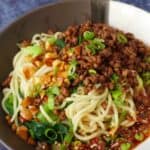
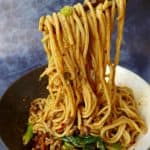
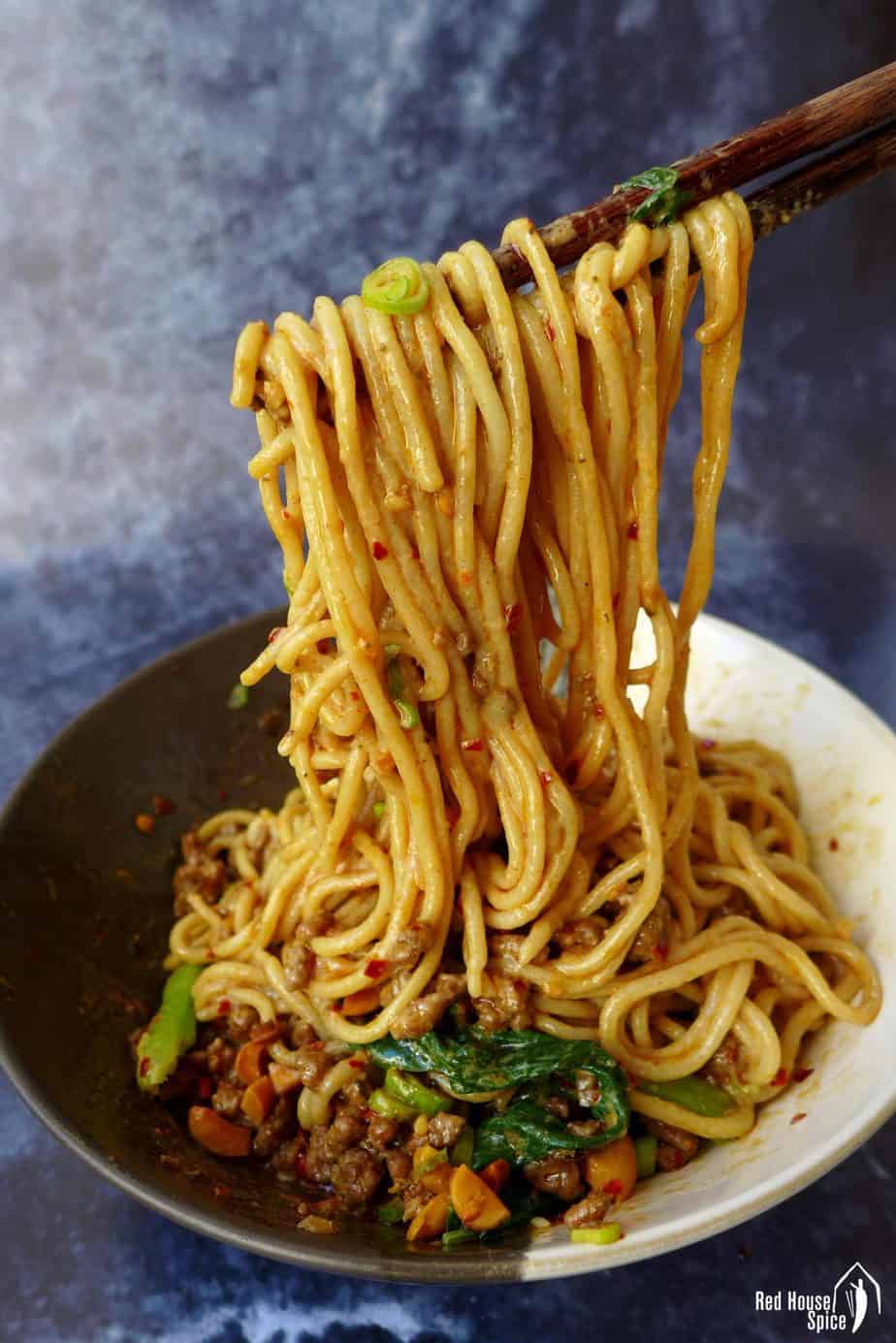
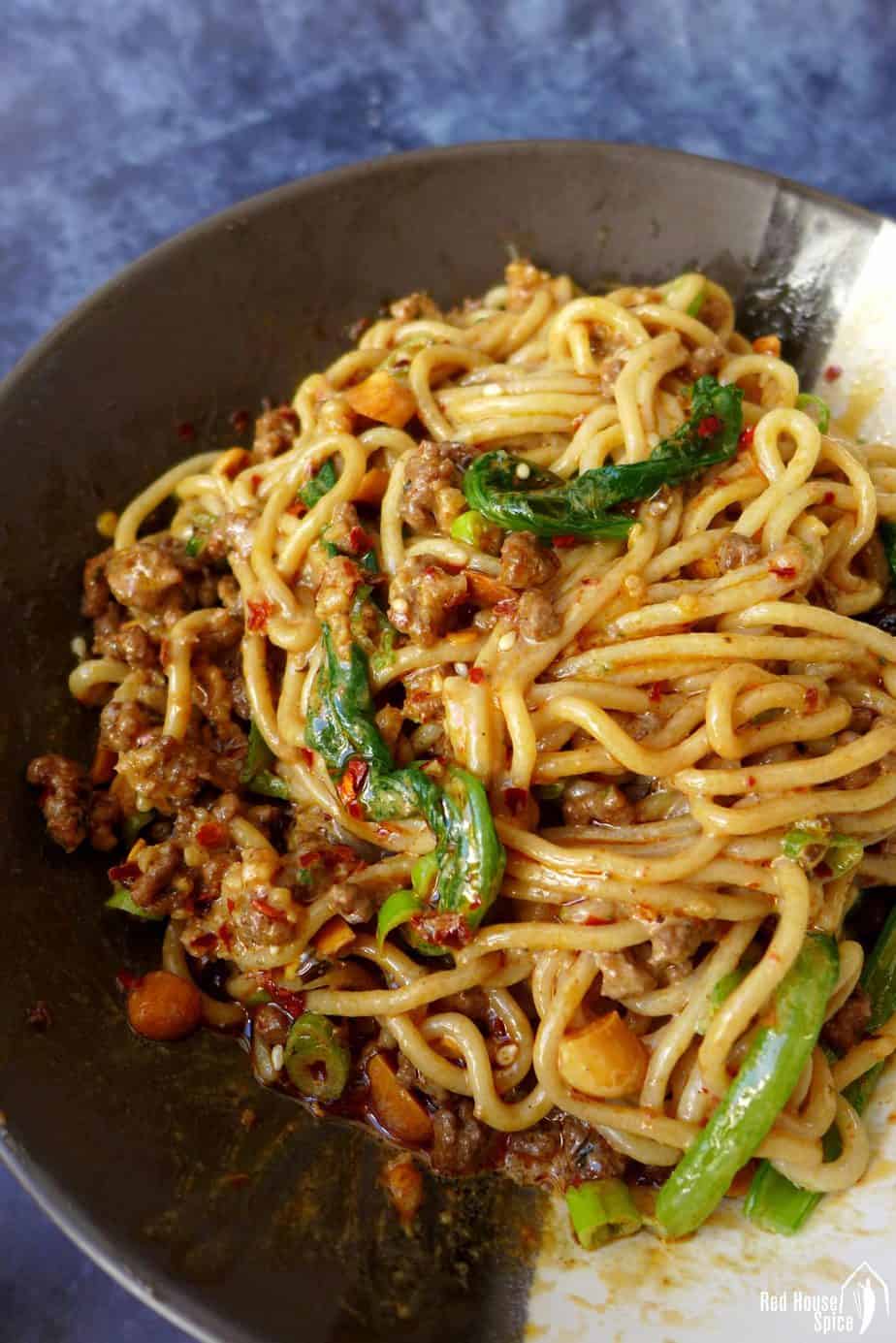
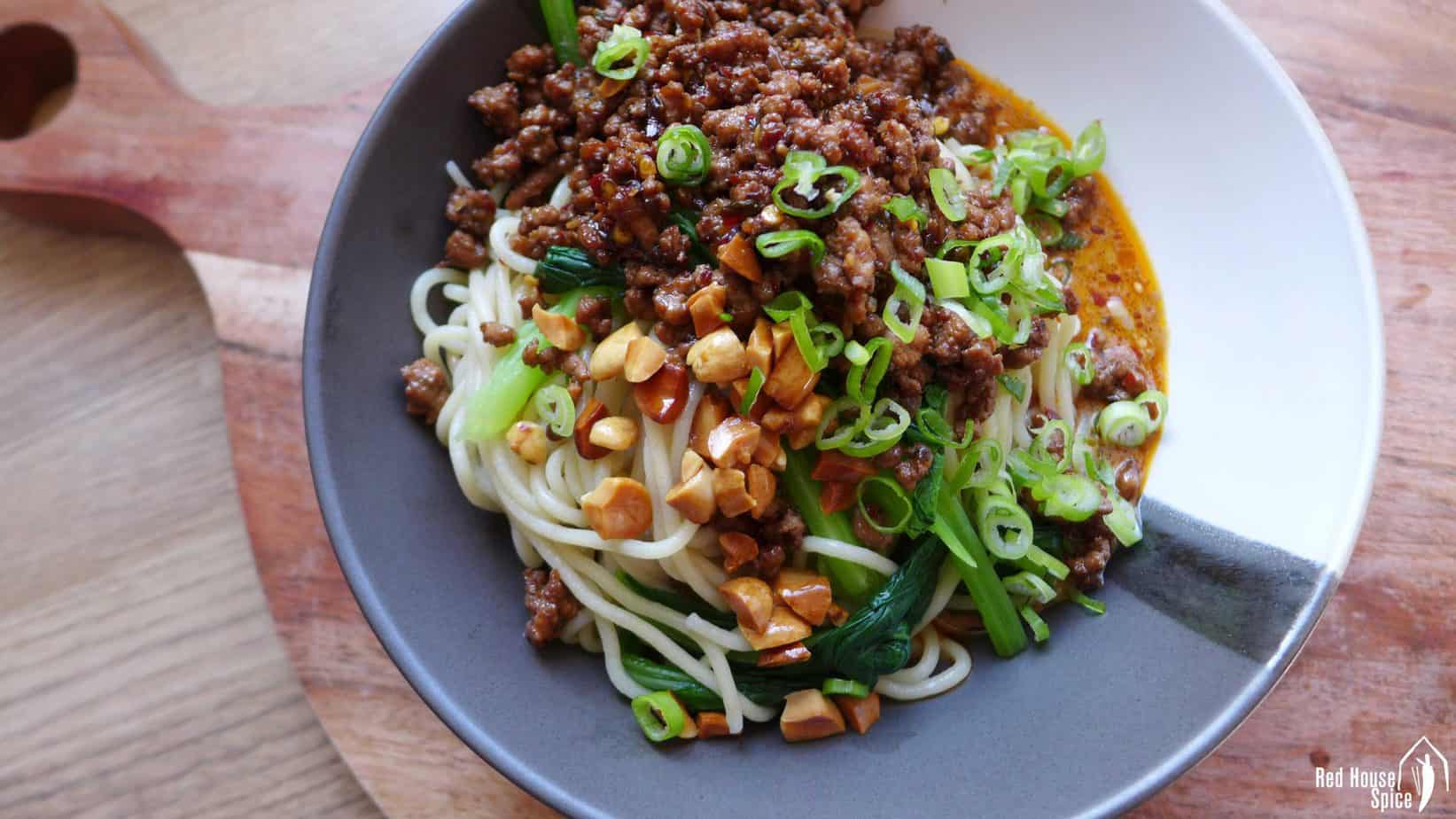
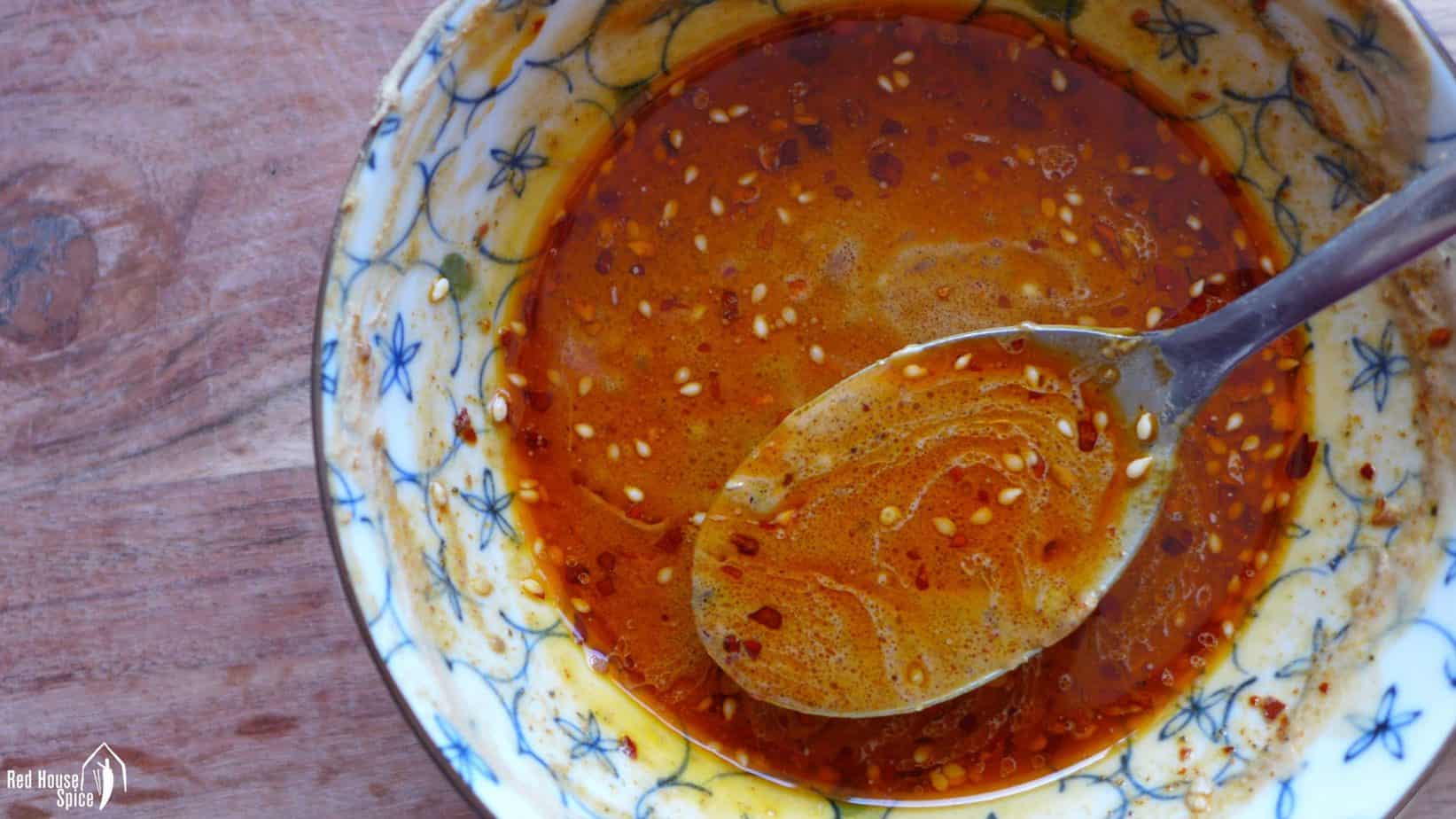
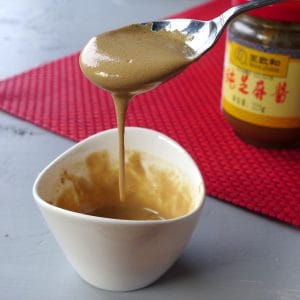
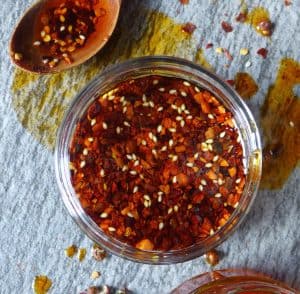
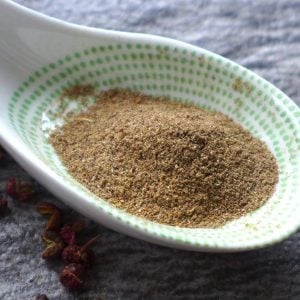
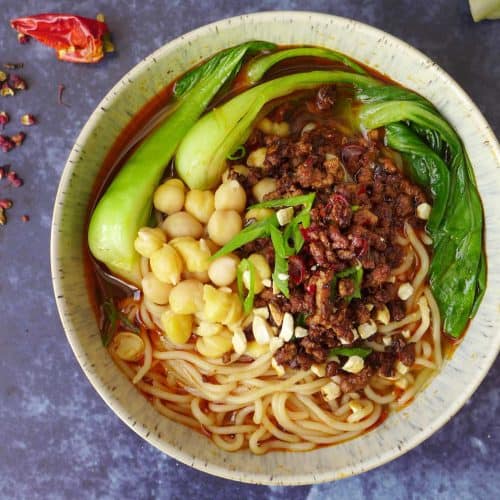
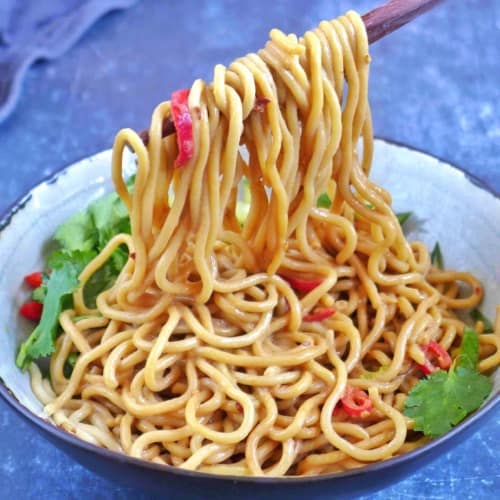
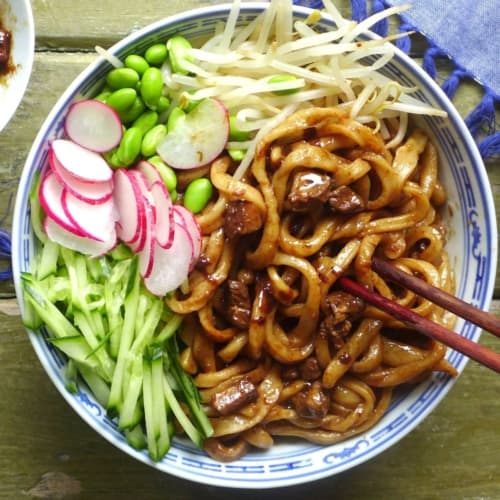
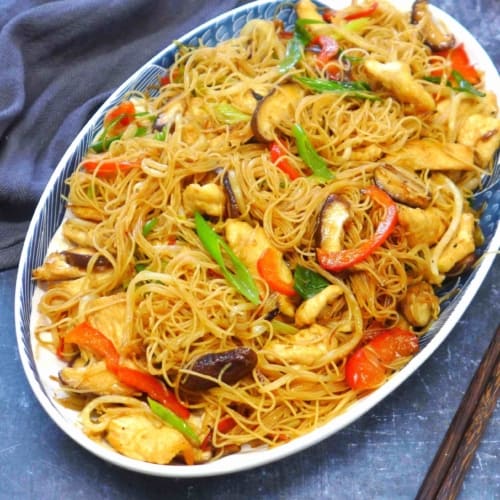
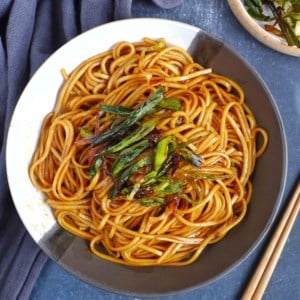

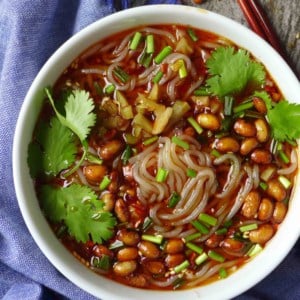
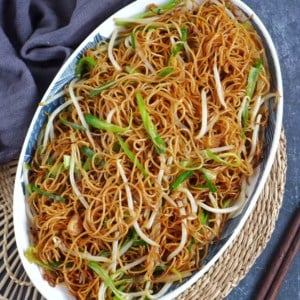
An excellent recipe, clear, well explained easy to follow and very very good. Highly recommended.
So lovely to see your kind message Keith! Glad you’ve enjoyed!
Hola Wei we are 2 at home, I have an empty nest. This recipe suits me very well. Question. I have 350 grams of mustard greens. What other recipe can I use it ? It would be a penalty to be spoiled. Thanks in advance. 😘😘😘
Glad you’ve enjoyed it Wendy! To use the preserved mustard greens, try Chongqing Noodles, Sichuan savoury sticky rice cakes, add a small amount to dumpling fillings, or use it in any stir-fried dishes for the saltiness and extra flavour. Hope this helps!
Thank you. I took note
I made these for the first time tonight and they were amazing! Thank you for sharing this recipe, it’s going to be a dinner staple from now on 🙂
My pleasure Carolyn! It’s our regular dinner/lunch staple too. So addictive, isn’t it?
Hi Wei,
Is the ya cai in a refrigerated section or on a shelf in Chinese store? I can’t find it at store. Thank you.
Omg! This is so perfect! I also love spicy foods and noodles is one of my comfort foods! I will definitely try this recipe. Timing’s perfect ’cause I am craving for some noodles now. Thank you for sharing this!
My pleasure! Happy cooking!
Hi Wei – thank you so much for this, I can’t wait to try it out. I was however wondering which cooking oil you use and recommend? Also, I live in Hong Kong – if there’s a secret store you know of to get all the ingredients, please let me know :)…! Many thanks, Jen
Hi Jen! Any neutral cooking oil would work for this recipe. My personal favourite is Chinese peanut oil which has a hint of nutty flavour.
Fantastic Recipe and tasted divine! Thank you so much for sharing.
My pleasure Aurora! Glad that you’ve enjoyed it!
Dear Wei., Thank you for the great and fast recipes and amazing blog. Love that it has short (!!!) videos and detailed instructions as well, and one does not have to spend lots of time reading or watching obvious things…but has an option to fill the gaps if needed.
You’re welcome! Very happy to know that you like my way of presenting the recipe.
I made this for the first time today. I made my chili oil in advance as well. The dish turned out absolutely amazing!!! Thank you for the inspiration. I’ve always been adventurous in the kitchen but Chinese cooking has never been my thing. I’m beginning to feel comfortable thanks to your step by step instructions, videos and notes.
So happy that my Dan Dan Noodle recipe has made you feel comfortable stepping into the world of Chinese cuisine. Enjoy your adventure!
I made this today and I enjoyed it greatly. I’m not sure if I got the right preserved mustard greens, but it was really easy, quick and absolutely delicious. I’ll definitely be making it again! Your recipes never let me down.
So happy to hear that!